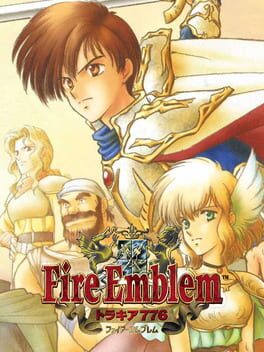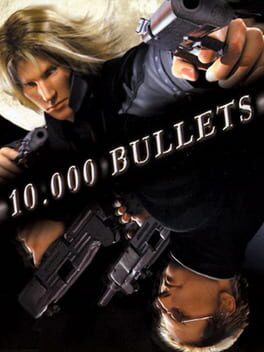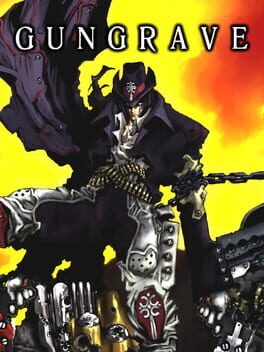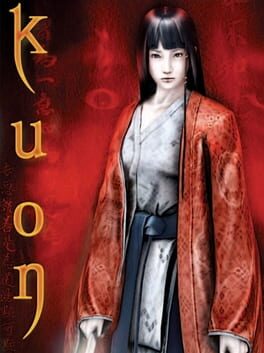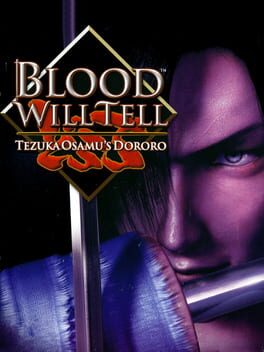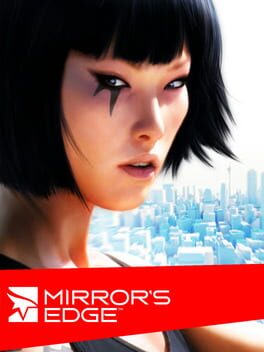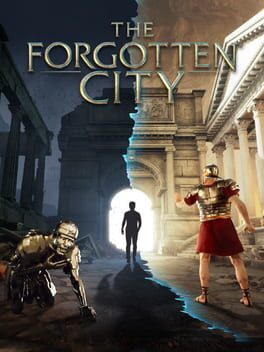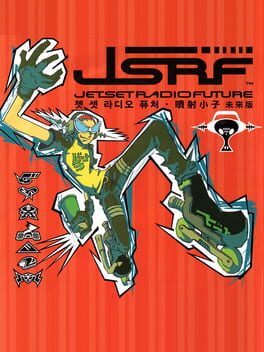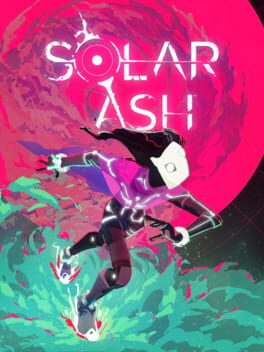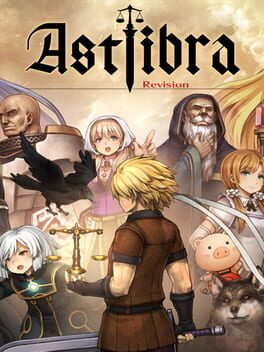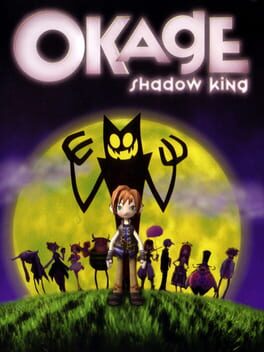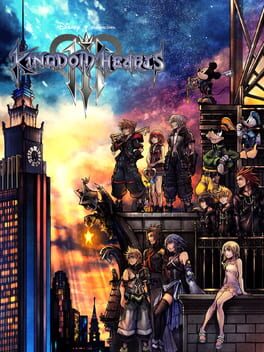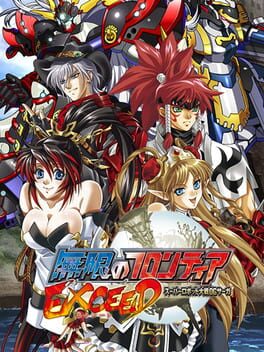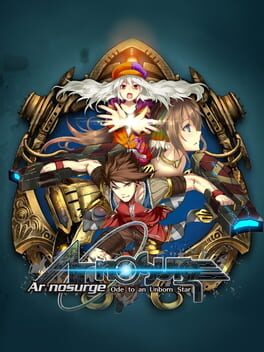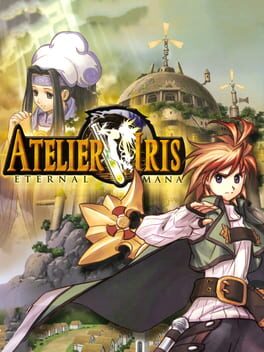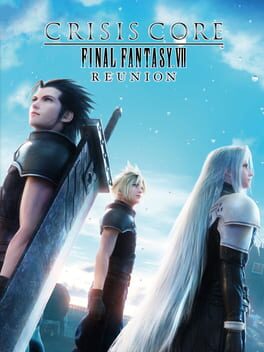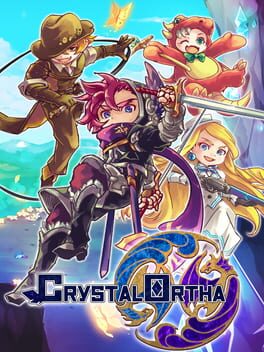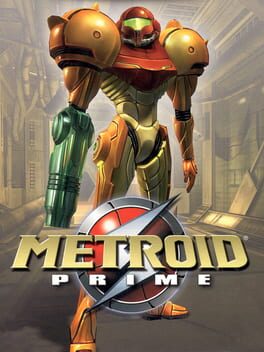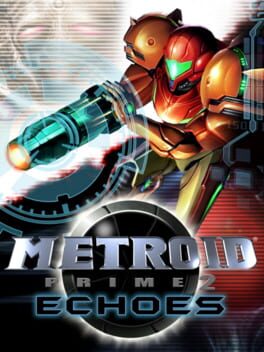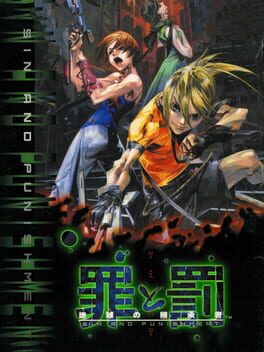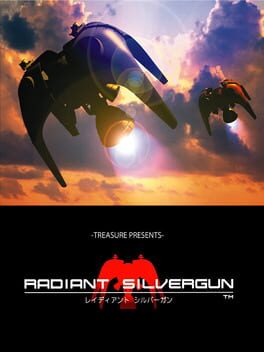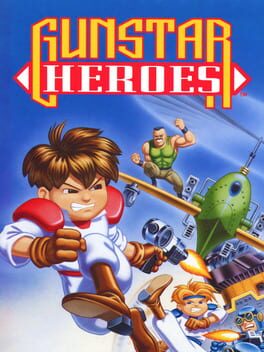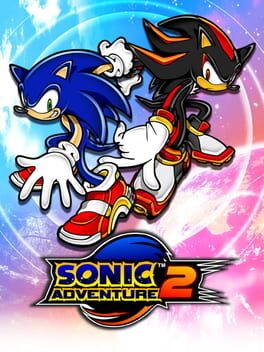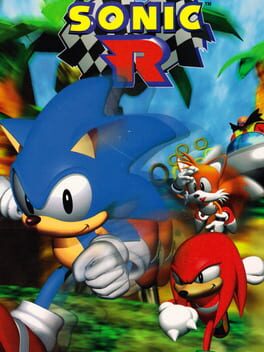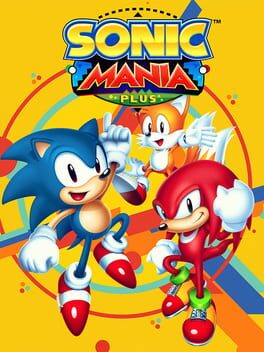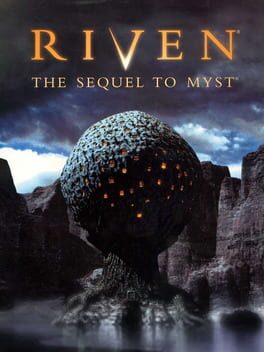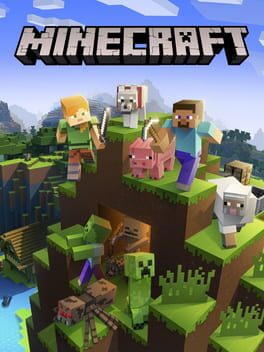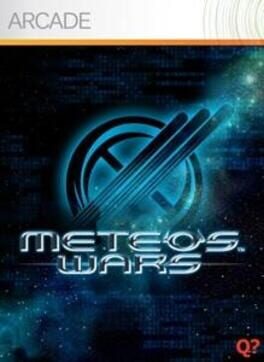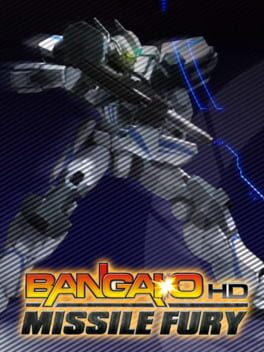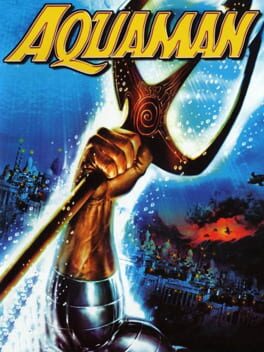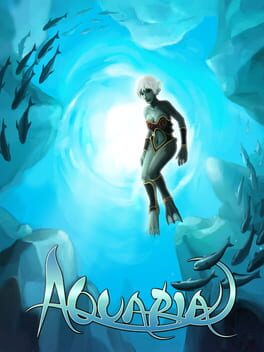mutyumu
1299 reviews liked by mutyumu
Really charming Indiana Jones-themed Doom total conversion, fighting through waves of Nazis and undead guardians in ruins around the world. Biggest surprise for me was the strength of the scenario design and pacing- fully expected to see everything the game had to offer by the end of the first episode, but there’s steady introduction of new enemies and weapons, alongside some nice breaks in the formula to keep things interesting. A definite highlight is the start of the Egypt episode, a dense shootout full of destructible props in a museum that’s far more open to exploration than the linear action of much of the rest of the game- and which also demonstrates how strong and varied the roster of hitscan enemies here are.
While I think Venturous is a little too conservative with it’s Doom II analogs, only rarely making you fight Revenant and Archvile equivalents- and usually at the end of episodes- having to prioritize heavy-machine gunners or grenadiers goes a long way in spicing up the action. The best trick it pulls that really capitalizes on this variety is ambushing you whenever you’ve just cleared out an area, foot soldiers pouring in right as you’ve gotten a handle on the undead hordes. It should get stale after a while, but the steady alternation and escalation of these threats more than carries the combat for the duration, bread-and-butter arena fights against monsters and more tactical shootouts against humans.
Ended up wrapping up a playthrough of the 1.3 release right as the newest update dropped, which includes an additional episode in Greece and generally fills out the game really nicely- with an extra visual pass and remixed level arrangements. One of my original criticisms was how weak the ending was, fighting a simplistic boss that you could circle-strafe around and lock down with machine gun fire, now traded out for one where you’re only armed with the magically-infused weapons, the boss now able to use attacks from the entirety of the enemy roster. I didn’t die on either encounter, and it still functionally boils down to circle-strafing it until you deplete its health bar, this newest version is unambiguously the fuller experience- and is a microcosm for the ways the game has been bolstered overall, visually sharper and more novel mechanically.
Even with all the positive changes, levels can still get kind of homogeneous by the end. You can only delve into lost tombs and ancient ruins so many times before it all starts to blur together- as unusual as it may sound from me, probably a sign that the game could’ve used some breaks from all the combat: a couple of gimmick levels, like some kind of teleporter puzzle or a proper labyrinth map could’ve gone a long way at selling the adventurer fantasy in a way combat tunnels just don’t provide (or really go for broke and make a besieged town built over some ruins as a hub area, similar to other shooters like Afterglow and Hedon).
Otherwise, amazing to see the jump in quality from the 1.3 to the 1.5 release- gave me the unusually good problem of having to throw out a bunch of my criticisms on the game, and the newly-included cliffhanger ending has me eager to see what this developer decides to tackle next.
While I think Venturous is a little too conservative with it’s Doom II analogs, only rarely making you fight Revenant and Archvile equivalents- and usually at the end of episodes- having to prioritize heavy-machine gunners or grenadiers goes a long way in spicing up the action. The best trick it pulls that really capitalizes on this variety is ambushing you whenever you’ve just cleared out an area, foot soldiers pouring in right as you’ve gotten a handle on the undead hordes. It should get stale after a while, but the steady alternation and escalation of these threats more than carries the combat for the duration, bread-and-butter arena fights against monsters and more tactical shootouts against humans.
Ended up wrapping up a playthrough of the 1.3 release right as the newest update dropped, which includes an additional episode in Greece and generally fills out the game really nicely- with an extra visual pass and remixed level arrangements. One of my original criticisms was how weak the ending was, fighting a simplistic boss that you could circle-strafe around and lock down with machine gun fire, now traded out for one where you’re only armed with the magically-infused weapons, the boss now able to use attacks from the entirety of the enemy roster. I didn’t die on either encounter, and it still functionally boils down to circle-strafing it until you deplete its health bar, this newest version is unambiguously the fuller experience- and is a microcosm for the ways the game has been bolstered overall, visually sharper and more novel mechanically.
Even with all the positive changes, levels can still get kind of homogeneous by the end. You can only delve into lost tombs and ancient ruins so many times before it all starts to blur together- as unusual as it may sound from me, probably a sign that the game could’ve used some breaks from all the combat: a couple of gimmick levels, like some kind of teleporter puzzle or a proper labyrinth map could’ve gone a long way at selling the adventurer fantasy in a way combat tunnels just don’t provide (or really go for broke and make a besieged town built over some ruins as a hub area, similar to other shooters like Afterglow and Hedon).
Otherwise, amazing to see the jump in quality from the 1.3 to the 1.5 release- gave me the unusually good problem of having to throw out a bunch of my criticisms on the game, and the newly-included cliffhanger ending has me eager to see what this developer decides to tackle next.
Devil's Third
2015
"You must be Devil's Third for the Nintendo Wii U if you think we fucking"
Me:
Me:
I played FE5 almost as a joke so my friends could watch it kill me in real life. I don't even like FE4. I wasn't prepared for this game to own. I wasn't prepared for it to unironically be series Top 3 material. What the fuck.
With a lot of beloved hard games, the refrain is that they're Hard But Fair. (I think it started with God Hand commercials?) Thracia's difficulty probably lives up to the hype, and the game is amazing, but I cannot overstate how much it's not fair. One of the great things is that it's hard to sum up why it's so difficult, because it's not any one main reason; the game is inventively sadistic. Every other chapter it pulls some shit that warrants brand new amendments to the Fantasy Geneva Conventions. In one map you may have to outrun an entire squadron of wyvern riders with Killer Lances who spawn closer to what you're trying to protect than you do and you're on slow ass mountain terrain. In another, you want to turn a bunch of powerful enemies into friendly green units by allowing them to talk to specific other green units, with no ability to steer either party toward each other, and also the enemies who are still red will immediately start butchering the turncoats. The game is an endless bag of absurd, dirty tricks being played on you personally, and it's honestly both hilarious to fail and immensely satisfying to finally solve the puzzle.
There are also a ton of little mechanical quirks, some of them infamous and none of which would be back-breaking on their own, but the cumulative effect requires your entire strategic mentality to be completely different from in any other game in the series. For example, most stats cap at 20 for every class, and a lot of your units honestly have pretty great growth rates, so that drastically changes the value of something as basic as EXP. The game actually has a Konami Code-style cheat you can use on the main menu to literally double everyone's EXP gains, but there's debate over whether it actually makes the game any easier. You gain items over the course of the game that increase a unit's growths, so everyone ballooning two thirds of the way to level cap before you get most of them can actually kind of fuck you. Love it or hate it, I think it takes an incredibly interesting game to make a unilateral gigantic level boost potentially disadvantageous to the player. Also, you've probably heard that healing can miss; that's not actually one of your bigger problems (though it can really come in clutch to ruin an entire plan sometimes), but it is an extremely funny indicator of the game's overall attitude towards the player. There are a lot of other innovations you don't hear about as oddities because they simply stuck around; weird and brutal as it is, the game feels shockingly modern (or I suppose I should say "like a 2000s-era Fire Emblem") compared to the other Shouzou Kaga games.
But the most important feature, and another one you've probably heard of, is the capture mechanic--you can actually nonlethally disable enemies (and steal all their shit)! But something you might not pick up on until you're playing the game is that it's basically your only source of income. You get a pretty typical number of items from treasure chests and villages, sure, but enemies never drop anything when killed, shop prices are fucking exorbitant and you NEVER, at any point in the game, get any money in any way other than selling items. There aren't even gems or anything that exist only to sell for a lot, everything you can sell is potentially useful in its own right and you get peanuts compared to how much it would cost to buy the same thing. It's not a minor or optional mechanic; if you like it when your army has weapons, you need to be capturing on an extremely regular basis. It makes for a really crunchy, interesting in-game economy where you're basically always tense about your equipment.
Luckily, the other really important thing about capturing is that it's really fucking hard and dangerous. You have to defeat the enemy anyway to capture them; you can't do it on enemy phase so it often requires some tricky baiting; some units can almost never do it at all because you need higher constitution than the enemy; doing it with other enemies around will definitely get someone killed because you have severe stat penalties while holding a captive; and worst of all, using the Capture command instead of Attack also gives you stat penalties. It turns out fighting with edged weapons is harder when you're trying not to kill the fucker, what's up with that?
This also means the better the loot, the harder it is to get, since rare and valuable items tend to be carried by stronger enemies who are deeper behind enemy lines. You're basically running a cost-benefit analysis every time you see something you really want; you may have to stick your entire head in a blender to get it, but can you afford to pass it up? The game is hard right now, but it's not gonna get any easier later on, especially if you're not building a stockpile of exactly this kind of resource. That extra Warp staff will be a huge lifeline. Did I mention that the guy is using it every turn, so by the time you get to him and take it, having run fucking pell-mell through an obstacle course of siege weaponry and cavalry that overextended you for the rest of the map, it has one cast left? The game is littered with honey pots like this, where it dangles something you DESPERATELY want in front of you, then makes it so difficult and costly to get that you don't realize it's not worth it until you're already hard committed. I hear you laughing at me, Kaga, you weird chauvinist fuck! This still doesn't make you cool!
So obviously I'm an idiot masochist, but there is more than pain here. Counterintuitively, for how much you're suffering, you get to fuck around with some of the strongest units in the series. (Relative to the game around them. Their stats cap at 20 they should not fight FE10 units--) You form the kind of attachment to characters like Mareeta and Asbel, to name just a couple of the more extreme examples, that you can normally only get with people you've ACTUALLY been to war with. They're your fucking rock. A fixed point you can rely on when you need them most.
It also helps that, in moderation, you get to be just as sadistic as the game. I know I just spent a small novel hyping up the scarcity of resources, but the thing about the game making you fight like hell to get anything is that it can make a lot more crazy stuff technically available. You won't get out of this map with a Brave Sword, a Sleep staff, a promotion item and two Silver weapons--but with some elbow grease you can probably get a couple of them, and that actually gives you a lot of freedom. Your toolkit is both limited and potentially really potent, and sometimes you realize you have the right combination of staves or something to completely ratfuck a challenge that looked impossible at first glance, as a reward for having worked hard earlier in the game. That's a rare, amazing feeling.
Okay, this is a stupid sentence but it's my review and it can be stupid if I want: I haven't played Pathologic, but FE5 kind of makes me feel the way people describe Pathologic. I mean, I wouldn't call them similar games, the narrative here is not exactly high art, but it's a story about being a scrappy underdog rebel faction fighting a huge empire and the gameplay genuinely commits to that feeling. It is impossible to forget while playing this game that everything is working against you, you have nothing but what you can desperately claw out of somebody else's hands, and you cannot win by fighting fair. Thracia really is a harrowing game, but inside the infamous struggle is something that sticks with you; something bold, fascinating, and incredibly rewarding.
although Saias being arbitrarily immune to Sleep and Silence in chapter 22 is fucking--
With a lot of beloved hard games, the refrain is that they're Hard But Fair. (I think it started with God Hand commercials?) Thracia's difficulty probably lives up to the hype, and the game is amazing, but I cannot overstate how much it's not fair. One of the great things is that it's hard to sum up why it's so difficult, because it's not any one main reason; the game is inventively sadistic. Every other chapter it pulls some shit that warrants brand new amendments to the Fantasy Geneva Conventions. In one map you may have to outrun an entire squadron of wyvern riders with Killer Lances who spawn closer to what you're trying to protect than you do and you're on slow ass mountain terrain. In another, you want to turn a bunch of powerful enemies into friendly green units by allowing them to talk to specific other green units, with no ability to steer either party toward each other, and also the enemies who are still red will immediately start butchering the turncoats. The game is an endless bag of absurd, dirty tricks being played on you personally, and it's honestly both hilarious to fail and immensely satisfying to finally solve the puzzle.
There are also a ton of little mechanical quirks, some of them infamous and none of which would be back-breaking on their own, but the cumulative effect requires your entire strategic mentality to be completely different from in any other game in the series. For example, most stats cap at 20 for every class, and a lot of your units honestly have pretty great growth rates, so that drastically changes the value of something as basic as EXP. The game actually has a Konami Code-style cheat you can use on the main menu to literally double everyone's EXP gains, but there's debate over whether it actually makes the game any easier. You gain items over the course of the game that increase a unit's growths, so everyone ballooning two thirds of the way to level cap before you get most of them can actually kind of fuck you. Love it or hate it, I think it takes an incredibly interesting game to make a unilateral gigantic level boost potentially disadvantageous to the player. Also, you've probably heard that healing can miss; that's not actually one of your bigger problems (though it can really come in clutch to ruin an entire plan sometimes), but it is an extremely funny indicator of the game's overall attitude towards the player. There are a lot of other innovations you don't hear about as oddities because they simply stuck around; weird and brutal as it is, the game feels shockingly modern (or I suppose I should say "like a 2000s-era Fire Emblem") compared to the other Shouzou Kaga games.
But the most important feature, and another one you've probably heard of, is the capture mechanic--you can actually nonlethally disable enemies (and steal all their shit)! But something you might not pick up on until you're playing the game is that it's basically your only source of income. You get a pretty typical number of items from treasure chests and villages, sure, but enemies never drop anything when killed, shop prices are fucking exorbitant and you NEVER, at any point in the game, get any money in any way other than selling items. There aren't even gems or anything that exist only to sell for a lot, everything you can sell is potentially useful in its own right and you get peanuts compared to how much it would cost to buy the same thing. It's not a minor or optional mechanic; if you like it when your army has weapons, you need to be capturing on an extremely regular basis. It makes for a really crunchy, interesting in-game economy where you're basically always tense about your equipment.
Luckily, the other really important thing about capturing is that it's really fucking hard and dangerous. You have to defeat the enemy anyway to capture them; you can't do it on enemy phase so it often requires some tricky baiting; some units can almost never do it at all because you need higher constitution than the enemy; doing it with other enemies around will definitely get someone killed because you have severe stat penalties while holding a captive; and worst of all, using the Capture command instead of Attack also gives you stat penalties. It turns out fighting with edged weapons is harder when you're trying not to kill the fucker, what's up with that?
This also means the better the loot, the harder it is to get, since rare and valuable items tend to be carried by stronger enemies who are deeper behind enemy lines. You're basically running a cost-benefit analysis every time you see something you really want; you may have to stick your entire head in a blender to get it, but can you afford to pass it up? The game is hard right now, but it's not gonna get any easier later on, especially if you're not building a stockpile of exactly this kind of resource. That extra Warp staff will be a huge lifeline. Did I mention that the guy is using it every turn, so by the time you get to him and take it, having run fucking pell-mell through an obstacle course of siege weaponry and cavalry that overextended you for the rest of the map, it has one cast left? The game is littered with honey pots like this, where it dangles something you DESPERATELY want in front of you, then makes it so difficult and costly to get that you don't realize it's not worth it until you're already hard committed. I hear you laughing at me, Kaga, you weird chauvinist fuck! This still doesn't make you cool!
So obviously I'm an idiot masochist, but there is more than pain here. Counterintuitively, for how much you're suffering, you get to fuck around with some of the strongest units in the series. (Relative to the game around them. Their stats cap at 20 they should not fight FE10 units--) You form the kind of attachment to characters like Mareeta and Asbel, to name just a couple of the more extreme examples, that you can normally only get with people you've ACTUALLY been to war with. They're your fucking rock. A fixed point you can rely on when you need them most.
It also helps that, in moderation, you get to be just as sadistic as the game. I know I just spent a small novel hyping up the scarcity of resources, but the thing about the game making you fight like hell to get anything is that it can make a lot more crazy stuff technically available. You won't get out of this map with a Brave Sword, a Sleep staff, a promotion item and two Silver weapons--but with some elbow grease you can probably get a couple of them, and that actually gives you a lot of freedom. Your toolkit is both limited and potentially really potent, and sometimes you realize you have the right combination of staves or something to completely ratfuck a challenge that looked impossible at first glance, as a reward for having worked hard earlier in the game. That's a rare, amazing feeling.
Okay, this is a stupid sentence but it's my review and it can be stupid if I want: I haven't played Pathologic, but FE5 kind of makes me feel the way people describe Pathologic. I mean, I wouldn't call them similar games, the narrative here is not exactly high art, but it's a story about being a scrappy underdog rebel faction fighting a huge empire and the gameplay genuinely commits to that feeling. It is impossible to forget while playing this game that everything is working against you, you have nothing but what you can desperately claw out of somebody else's hands, and you cannot win by fighting fair. Thracia really is a harrowing game, but inside the infamous struggle is something that sticks with you; something bold, fascinating, and incredibly rewarding.
although Saias being arbitrarily immune to Sleep and Silence in chapter 22 is fucking--
Best FE game. Top tier story. Loved alot of the mechanics in it like infinite trading, capturing, mov and auth stars. Fatigue is an interesting concept that I didn't mind because the game drowns you in so many good units
I adore Thracia 776. Never in my life have I been so positively passionate about such a frustrating, punishing, but mechanically complex and rewarding video game than this one. Each chapter was some form of struggle, but I eventually would understand how everything worked, and after executing long thought out strategies for several chapters, I had done it. I had beaten one of the most infamous Fire Emblem games ever made. I have a lot of things to say, and I probably won’t be able to word them all out here, but please read the rest if you can.
Chances are if you’ve been a fan of Fire Emblem for a decent time, you’ve more than likely heard of the infamous Thracia 776, a sidequel to 1996’s Genealogy Of The Holy War. The game’s reputation has been so widespread, however, very few people have seemed to actually play it. It’s very easy to be intimidated by Thracia because of what you may have heard online, but the truth is, the game really isn’t that unfair as fans online make it out to be. Not to say the game doesn’t have its moments, or that it’s an easy game (believe me, it most certainly is NOT) but Shouzo Kaga and his team put their best efforts to create a very tough, but totally learnable game that would reward players who can wrap their head around its mechanics.
I think what will doom you most about going into Thracia is trying to approach it like most other Fire Emblem games, because this entry is almost a polar opposite in some regards. An oversimplification of Fire Emblem gameplay is “position all the blue guys to kill the red guys until they’re all gone and then seize the throne”, which is honestly mostly true, and I’m not saying it’s a bad thing. It’s just that this one is less about the combat of Fire Emblem and focused on pure strategy.
A good example I think is Thracia’s emphasis on staves. Without a doubt, this is the Fire Emblem with THE most heavy stave usage in the series, with entries like The Binding Blade getting sort of close. The amount of warp and rescue staves you’re gonna be finding while also dealing with is crazy, and you’re going to want to train up your staff users as much as possible. A pretty frowned upon strategy in Fire Emblem games is the act of “warp skipping”, which is effectively warping a strong player unit to immediately kill the boss then sending your lord over to seize the throne. It’s viewed as “cheap”, and while I can understand that sentiment, it fits the tone of Thracia 776 like a glove. Absolutely EVERYTHING is stacked against you in the enemies’ favor if you try and approach each chapter like a normal Fire Emblem game, chances are the struggle will be unreal. The appeal of warp skipping and other “cheap” tactics is what makes the game so damn fun. Seeing how you can easily clear a chapter by outsmarting enemies with the tools given to you is never not going to be satisfying. Like as one instance, chapter 22 has the probably the hardest boss in the game, but if you’re a creative player there’s plenty of ways that you can cheese him. Maybe cast sleep on him, which permanently renders him useless for the rest of the chapter (since status ailments last forever until a chapter is over). Or if you think even HARDER you can steal a berserk staff from another boss, then use it on the other guy which will make him more than likely kill every single unit on the right side of the map, which I’ve seen in action through YouTube clips and it’s amazing. There’s huge potential that players who invest enough time into the game can tap into, and it is absolutely fascinating.
Tonally the game is literally perfect. The constant reinforcements and extremely tight chapter design makes Thracia a game about how it feels to be the underdogs of a war, but ultimately still shine through with enough wit and perseverance. I’d be lying if I said that I wasn’t so heavily touched by the narrative, as it can be so bleak and depressing, and yet there’s always that feint light of hope that kept me going. The further I got, the more it felt that I was seeing the light at the end of this long, long tunnel. Actively seizing the throne in the final chapter was like a thousand tons being thrown off my shoulders at once, the feeling was absolutely AMAZING.
Story wise I’m not sure if I like this one more than Genealogy, but what I AM sure of is that Leif is my favorite Fire Emblem protagonist. It’s not even a contest. If anything, Leif feels like a reflection of the average player. He’s young and inexperienced, and he loses many battles, but he NEVER gives up. Even after all he’s suffered, he has something to live for, and grows as a person. He grows with the player. I’ve seen arguments online that Leif is a weak lord, but that’s just flat out not true, both narratively and gameplay wise. He’s no Seliph in terms of sheer power, but he has good growths and his light brand is a really handy weapon especially early game. But once again, I think that ties back to the core problem….
Thracia 776 is misunderstood. Horribly. Now, I’m not saying that if you dislike the game, your opinion is invalid, or that you got “filtered” or whatever. I’m more so talking about the regurgitated opinions I hear about this game online that convinces me that most of these people have never even played the game. The constant reminder of the same few points such as “did you know staves can miss?” or “the status effects are terrible”. Now I will admit that some aspects of Thracia’s design can be unfair, mainly fog of war chapters with enemy staves or ambush spawns, that is absolutely not fair. But conversely, about 90% of the game’s unique quirks either don’t matter that much or are just actively great mechanics.. Like I never see anyone mention the genius of the capture system, or being able to trade items multiple times in a turn, or in the case of things like status ailments, can use them in YOUR favor. Or how about how basically every single unit in this game is viable and has valid usage? You can’t say that about really any other FE game. What I’m getting at is that the same misconceptions that Thracia being “too unfair” are more than likely from people who never even experienced the game firsthand.
And I completely understand that is the thing. I’m not faulting ANYONE for saying things like that, because I doubt it has any harmful intention. I was scared of playing the game myself, and look where I am now! I took the time to understand, analyze, and absorb myself in it, and now it’s something I consider an all time classic. Is Thracia a game for everyone? No, absolutely not. It will test you in a lot of ways. Your good items will break, some units may die, you’ll have to reset a lot, failure is inevitable. But the best part is, these hardships were made to be overcome. Just like Leif, you must press on, and never give up to prove your worth. I implore you give this a shot, especially if you love Fire Emblem, or unique SNES games, or Tactical games, or just good ass video games as a whole. Maybe you won’t like it, or maybe you will. But I think if I could do it, then hey, maybe so can you.
Chances are if you’ve been a fan of Fire Emblem for a decent time, you’ve more than likely heard of the infamous Thracia 776, a sidequel to 1996’s Genealogy Of The Holy War. The game’s reputation has been so widespread, however, very few people have seemed to actually play it. It’s very easy to be intimidated by Thracia because of what you may have heard online, but the truth is, the game really isn’t that unfair as fans online make it out to be. Not to say the game doesn’t have its moments, or that it’s an easy game (believe me, it most certainly is NOT) but Shouzo Kaga and his team put their best efforts to create a very tough, but totally learnable game that would reward players who can wrap their head around its mechanics.
I think what will doom you most about going into Thracia is trying to approach it like most other Fire Emblem games, because this entry is almost a polar opposite in some regards. An oversimplification of Fire Emblem gameplay is “position all the blue guys to kill the red guys until they’re all gone and then seize the throne”, which is honestly mostly true, and I’m not saying it’s a bad thing. It’s just that this one is less about the combat of Fire Emblem and focused on pure strategy.
A good example I think is Thracia’s emphasis on staves. Without a doubt, this is the Fire Emblem with THE most heavy stave usage in the series, with entries like The Binding Blade getting sort of close. The amount of warp and rescue staves you’re gonna be finding while also dealing with is crazy, and you’re going to want to train up your staff users as much as possible. A pretty frowned upon strategy in Fire Emblem games is the act of “warp skipping”, which is effectively warping a strong player unit to immediately kill the boss then sending your lord over to seize the throne. It’s viewed as “cheap”, and while I can understand that sentiment, it fits the tone of Thracia 776 like a glove. Absolutely EVERYTHING is stacked against you in the enemies’ favor if you try and approach each chapter like a normal Fire Emblem game, chances are the struggle will be unreal. The appeal of warp skipping and other “cheap” tactics is what makes the game so damn fun. Seeing how you can easily clear a chapter by outsmarting enemies with the tools given to you is never not going to be satisfying. Like as one instance, chapter 22 has the probably the hardest boss in the game, but if you’re a creative player there’s plenty of ways that you can cheese him. Maybe cast sleep on him, which permanently renders him useless for the rest of the chapter (since status ailments last forever until a chapter is over). Or if you think even HARDER you can steal a berserk staff from another boss, then use it on the other guy which will make him more than likely kill every single unit on the right side of the map, which I’ve seen in action through YouTube clips and it’s amazing. There’s huge potential that players who invest enough time into the game can tap into, and it is absolutely fascinating.
Tonally the game is literally perfect. The constant reinforcements and extremely tight chapter design makes Thracia a game about how it feels to be the underdogs of a war, but ultimately still shine through with enough wit and perseverance. I’d be lying if I said that I wasn’t so heavily touched by the narrative, as it can be so bleak and depressing, and yet there’s always that feint light of hope that kept me going. The further I got, the more it felt that I was seeing the light at the end of this long, long tunnel. Actively seizing the throne in the final chapter was like a thousand tons being thrown off my shoulders at once, the feeling was absolutely AMAZING.
Story wise I’m not sure if I like this one more than Genealogy, but what I AM sure of is that Leif is my favorite Fire Emblem protagonist. It’s not even a contest. If anything, Leif feels like a reflection of the average player. He’s young and inexperienced, and he loses many battles, but he NEVER gives up. Even after all he’s suffered, he has something to live for, and grows as a person. He grows with the player. I’ve seen arguments online that Leif is a weak lord, but that’s just flat out not true, both narratively and gameplay wise. He’s no Seliph in terms of sheer power, but he has good growths and his light brand is a really handy weapon especially early game. But once again, I think that ties back to the core problem….
Thracia 776 is misunderstood. Horribly. Now, I’m not saying that if you dislike the game, your opinion is invalid, or that you got “filtered” or whatever. I’m more so talking about the regurgitated opinions I hear about this game online that convinces me that most of these people have never even played the game. The constant reminder of the same few points such as “did you know staves can miss?” or “the status effects are terrible”. Now I will admit that some aspects of Thracia’s design can be unfair, mainly fog of war chapters with enemy staves or ambush spawns, that is absolutely not fair. But conversely, about 90% of the game’s unique quirks either don’t matter that much or are just actively great mechanics.. Like I never see anyone mention the genius of the capture system, or being able to trade items multiple times in a turn, or in the case of things like status ailments, can use them in YOUR favor. Or how about how basically every single unit in this game is viable and has valid usage? You can’t say that about really any other FE game. What I’m getting at is that the same misconceptions that Thracia being “too unfair” are more than likely from people who never even experienced the game firsthand.
And I completely understand that is the thing. I’m not faulting ANYONE for saying things like that, because I doubt it has any harmful intention. I was scared of playing the game myself, and look where I am now! I took the time to understand, analyze, and absorb myself in it, and now it’s something I consider an all time classic. Is Thracia a game for everyone? No, absolutely not. It will test you in a lot of ways. Your good items will break, some units may die, you’ll have to reset a lot, failure is inevitable. But the best part is, these hardships were made to be overcome. Just like Leif, you must press on, and never give up to prove your worth. I implore you give this a shot, especially if you love Fire Emblem, or unique SNES games, or Tactical games, or just good ass video games as a whole. Maybe you won’t like it, or maybe you will. But I think if I could do it, then hey, maybe so can you.
I understand this might be an unpopular opinion, but I wasn't particularly impressed with this game. Some fans love to complain about newer games in the series while praising the older games like they're the second coming of Christ or something. So when I finally played this game I was honestly pretty disappointed.
Genealogy of the Holy War presents itself as a political drama, but I found its characters to be rather flat. While some initially intrigued me, that interest quickly waned, especially after a significant plot twist. Most characters failed to leave a lasting impression on me and I struggle to recall many of them as they simply weren't memorable.
I can appreciate the game's attempt to explore dark themes like the child hunts, but I felt the execution fell short, often resorting to shock value without deeper exploration or nuance. The presence of cartoonishly evil characters also didn't help in making these themes feel more impactful.
I wasn't fond of the numerous bad tropes used in this game, but it's an old school jrpg so it's whatever. However, even if the narrative and themes didn't resonate with me, I could forgive that if the gameplay was at least enjoyable. God, the maps were atrocious. I know they're like that for the purpose of its story and objectives but they're NOT fun.
Genealogy of the Holy War presents itself as a political drama, but I found its characters to be rather flat. While some initially intrigued me, that interest quickly waned, especially after a significant plot twist. Most characters failed to leave a lasting impression on me and I struggle to recall many of them as they simply weren't memorable.
I can appreciate the game's attempt to explore dark themes like the child hunts, but I felt the execution fell short, often resorting to shock value without deeper exploration or nuance. The presence of cartoonishly evil characters also didn't help in making these themes feel more impactful.
I wasn't fond of the numerous bad tropes used in this game, but it's an old school jrpg so it's whatever. However, even if the narrative and themes didn't resonate with me, I could forgive that if the gameplay was at least enjoyable. God, the maps were atrocious. I know they're like that for the purpose of its story and objectives but they're NOT fun.
ive never really liked this one, it isnt all that fun to play and it feels a lot less than the sum of its parts
This game would've gone harder if Sigurd, Deirdre, Julia and Seliph went "We are the Fire Emblem 4"
Persona 3 Reload
2024
the P5 and it's consequences have been a disaster for the human race
Persona 3 Reload
2024
It doesn't work.
3 is a game that has a lot of idiosyncracies and quirks to it that allow it to stand out among not just other entries in its series, but JRPGs in general. The limitations and frictive elements reinforce how finite the experience is and encourage engagement with its time management systems. Reload, as I vaguely riffed on with my one sentence review before, largely strips the game of most of the charm and leaves me with a product that is perfectly competent and yet feels deeply artless.
Persona 3 back in 2006 was designed as a fresh reboot with a fresh set of eyes on the series as whole. It's a monumental game for Hashino and Soejima -- while it wasn't their first work on Atlus' games, the duo created something distinctly... theirs. Something about the complete lack of involvement of the original creative names behind the game, including the no-brainer inclusion of Shoji Meguro at minimum, puts a bad taste in my mouth. It's not even that I'm drunk off auteur worship and think a loving product can't be made with new hands. It's that... Persona 3 is not a new product. It's an old one with a lot of significance to Atlus' history.
Reload manages to take a step back on almost every mechanic established in the original as a purposeful statement. One of the most immediately noticeable is the removal of a functional tactics/AI system. Others have highlighted the flaccid, restrictive and ineffective system in the remake and how it's largely not a replacement for the experience on the PS2. Without getting too into details, I'd rather highlight the logic behind its design from Hashino himself.
Hashino: There are a lot of RPGs out there where you can control every aspect of your party members, including what kind of underwear they are wearing… but because we wanted the player to relate to the Hero more than any other character in “Persona 3”, we wanted the other characters to feel like “other people”.
Soejima: It was important to make that distinction. It helped to emphasize the concept of Social Links, and it also allowed us to show off the improved AI. It would have been extra cool if the party members had been completely free of player control, but we knew that would be pushing it a bit too far, so we gave the player control over their equipment at least.
Hashino: It’s true that we got some feedback stating that the party system was “too difficult” to control effectively, but I’ll honestly say that I don’t regret doing what we did with it. I’m glad we stuck to our guns on that one.
You don't have to love the mechanic in the original, there's room for criticism in how it was implemented and established. However, it helps no one to not understand the very purposeful thematic statements Hashino wished to express -- the individuality and independence of your comrades in SEES. Reload does not even attempt to improve upon and evolve these systems, but does away with them as if they're just worthless cruft and "clunk" that needs to be stripped away.
Similar frictive elements have been gutted, such as the fatigue system, the maze-like structure of Tartarus being morphed into wide, open spaces with no intrigue or rat-brain navigation, and a myriad of other changes adjusted for "modern sensibilities". Reload is explicitly designed to model after 5 and the philosophies and approaches that game established.
I think the frustration here comes less from Reload being a bad video game in isolation and moreso how frustrating a precedent it sets. I do not want to live in a world where older properties and works are reheated and find themselves homogenized with recent best-sellers.
3 is a game that has a lot of idiosyncracies and quirks to it that allow it to stand out among not just other entries in its series, but JRPGs in general. The limitations and frictive elements reinforce how finite the experience is and encourage engagement with its time management systems. Reload, as I vaguely riffed on with my one sentence review before, largely strips the game of most of the charm and leaves me with a product that is perfectly competent and yet feels deeply artless.
Persona 3 back in 2006 was designed as a fresh reboot with a fresh set of eyes on the series as whole. It's a monumental game for Hashino and Soejima -- while it wasn't their first work on Atlus' games, the duo created something distinctly... theirs. Something about the complete lack of involvement of the original creative names behind the game, including the no-brainer inclusion of Shoji Meguro at minimum, puts a bad taste in my mouth. It's not even that I'm drunk off auteur worship and think a loving product can't be made with new hands. It's that... Persona 3 is not a new product. It's an old one with a lot of significance to Atlus' history.
Reload manages to take a step back on almost every mechanic established in the original as a purposeful statement. One of the most immediately noticeable is the removal of a functional tactics/AI system. Others have highlighted the flaccid, restrictive and ineffective system in the remake and how it's largely not a replacement for the experience on the PS2. Without getting too into details, I'd rather highlight the logic behind its design from Hashino himself.
Hashino: There are a lot of RPGs out there where you can control every aspect of your party members, including what kind of underwear they are wearing… but because we wanted the player to relate to the Hero more than any other character in “Persona 3”, we wanted the other characters to feel like “other people”.
Soejima: It was important to make that distinction. It helped to emphasize the concept of Social Links, and it also allowed us to show off the improved AI. It would have been extra cool if the party members had been completely free of player control, but we knew that would be pushing it a bit too far, so we gave the player control over their equipment at least.
Hashino: It’s true that we got some feedback stating that the party system was “too difficult” to control effectively, but I’ll honestly say that I don’t regret doing what we did with it. I’m glad we stuck to our guns on that one.
You don't have to love the mechanic in the original, there's room for criticism in how it was implemented and established. However, it helps no one to not understand the very purposeful thematic statements Hashino wished to express -- the individuality and independence of your comrades in SEES. Reload does not even attempt to improve upon and evolve these systems, but does away with them as if they're just worthless cruft and "clunk" that needs to be stripped away.
Similar frictive elements have been gutted, such as the fatigue system, the maze-like structure of Tartarus being morphed into wide, open spaces with no intrigue or rat-brain navigation, and a myriad of other changes adjusted for "modern sensibilities". Reload is explicitly designed to model after 5 and the philosophies and approaches that game established.
I think the frustration here comes less from Reload being a bad video game in isolation and moreso how frustrating a precedent it sets. I do not want to live in a world where older properties and works are reheated and find themselves homogenized with recent best-sellers.
221 lists liked by mutyumu
by Pangburn |
91 Games
by Drax |
20 Games
by LoreW001 |
154 Games
by sleeping0dragon |
43 Games
by Nilichi |
18 Games
by Reddish |
4 Games
by Detchibe |
32 Games
by Scamsley |
40 Games
by PZT |
260 Games
by MisterAtlas_ |
38 Games


